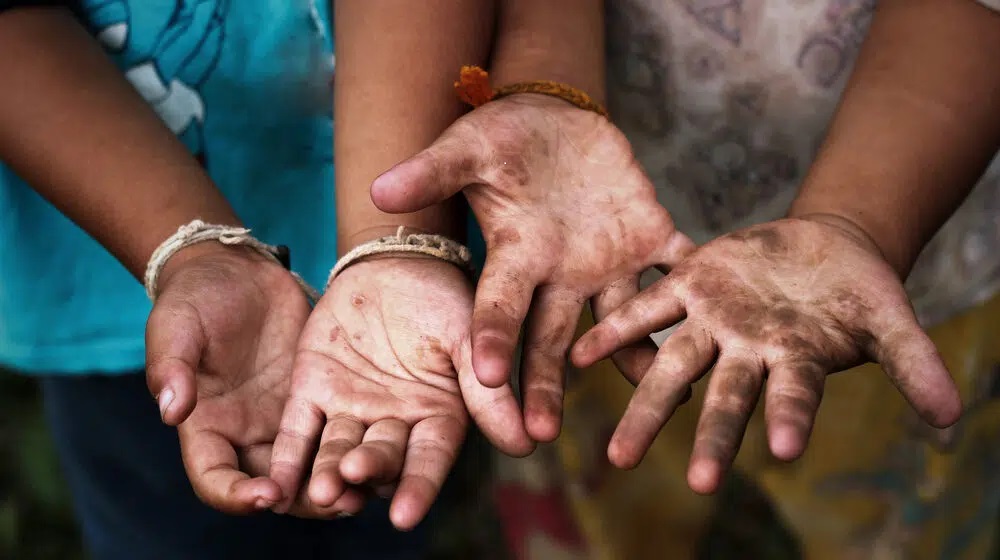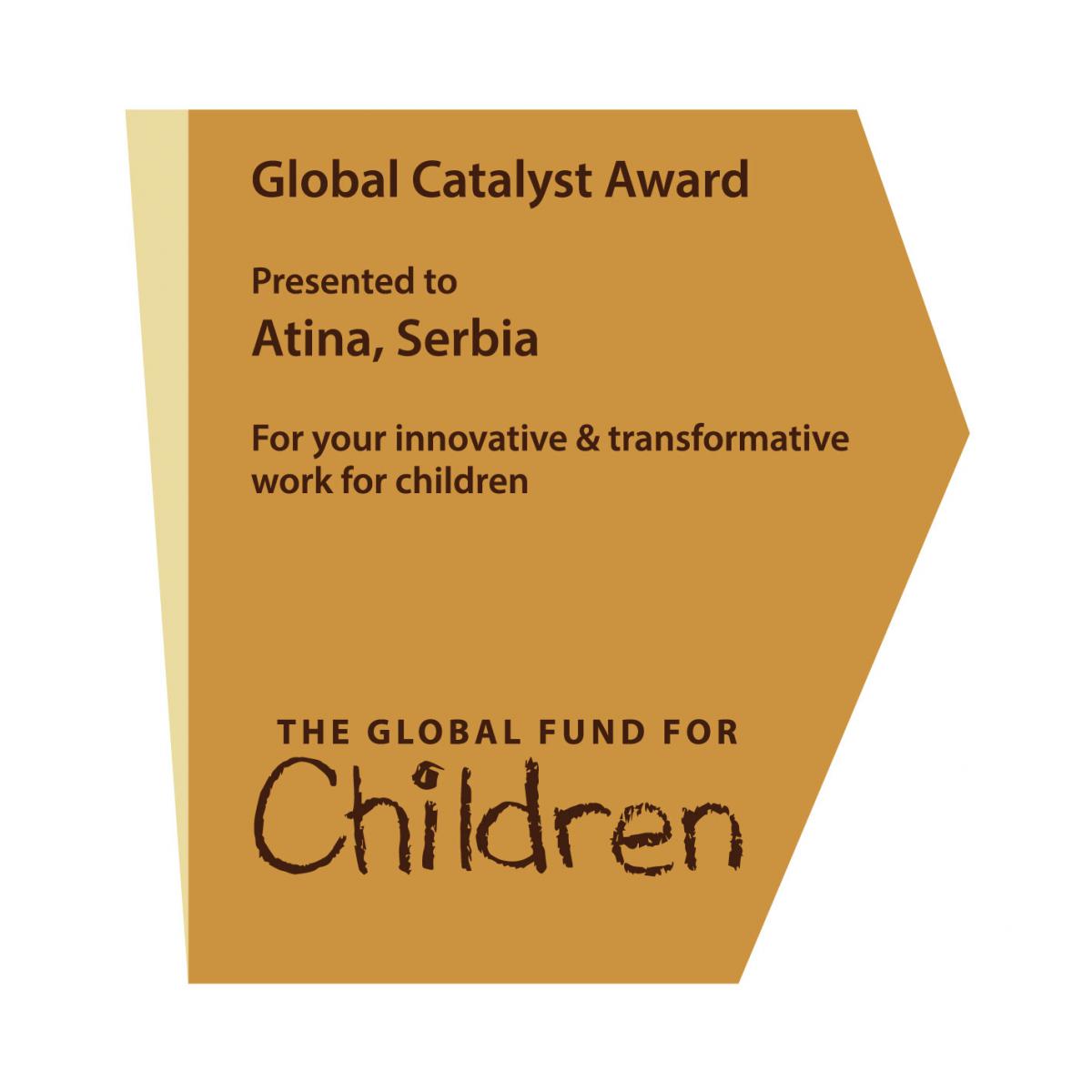Hotline: +381 61 63 84 071
To what extent is the problem of abuse of child labour recognised in Serbia?

To what extent is the problem of abuse of child labour recognised in Serbia?
The problem of child labour abuse in Serbia is widespread but insufficiently recognised. Children often suffer due to the inadequate education of their parents and the complex material situation they find themselves in, while the possibility of institutional action in these situations is minimal.
The law recognises and defines the abuse of child labour; however, there is not enough effective control and fight against this problem.
According to data from the Republic Statistical Office and the International Labor Organization (ILO), 82,000 cases of child labour were recorded in Serbia last year.
This means that children aged five to 17 worked, although the situation was not physically or mentally suitable.
By definition, the abuse of child labour is considered to be work that is mentally, physically, socially, and morally dangerous and harmful to the child and that affects the child's education by preventing them from attending school, forcing the child to leave education prematurely, or compelling the child to participate in school under harsh conditions, including the worst forms of child labour according to the ILO Convention.
The worst forms of child labour include slavery or practices similar to slavery, involving children in prostitution and pornography, exploiting children for committing criminal acts, as well as dangerous child labour.
Dangerous work for children will likely harm their health, safety, or morals, exposing them to hazards performed under hazardous circumstances or in risky activities.
However, not all work by children is prohibited.
Children over 15 have the right to work with parental consent. A child under 18 can enter into an employment relationship based on the findings of a competent health authority, which shows that the child can perform jobs that are not harmful to the child's health.
Jovan Protić, ILO Coordinator for Serbia, explains that the Labor Force Survey conducted by the Republic Statistical Office last year, using ILO methodology, showed that 82,000 children in Serbia are at risk of child labour.
Of these, he adds, two-thirds are in agriculture.
"The large number of cases is because many of these children in agriculture work for their parents. We had a campaign in villages in western Serbia, where the data was most critical, and we tried to talk to parents to find out whether they are consciously pushing their children into child labour or not," says Protić.
According to him, they received quite a variety of answers.
"Many of them do not know where the work of children, which is desirable for an hour or two a day picking raspberries or collecting eggs, ends. That is, everything that does not endanger their physical and mental health and does not separate them from school because those are the main parameters," he explains.
It is something entirely different, he adds when a child works in the field doing dangerous jobs.
"For example, driving a tractor, attaching a plough, or cutting down trees with a chainsaw, these are dangerous jobs considered child labour, even for children older than 15 years who can work with parental consent under the Labor Law," Protić notes.
He states that such situations have been seen in the field.
"However, we have encountered various responses from these parents. From one, we heard, 'How will my son build muscles if he does not work in the field?' And what do you say, and how do you react to that," asks Protić.
He believes that in these cases, it is not only crucial for state organs to react, but there needs to be work on education and raising awareness.
"In our organisation's opinion, the best response to child labour is to provide parents with a dignified job and earnings. The fact that a parent takes a child to the field is not just an indicator that they want their child to inherit the property, wealth, and occupation but also a sign of the difficult conditions in which people live, so they need all the help they can get. That is why they first reach for their children, partly out of ignorance of how dangerous it is and partly out of necessity to earn more for that household," explains our interlocutor.
He believes that the problem is also in the jurisdictions of institutions.
"The Labor Inspection has no jurisdiction to enter private farms; they can only pursue registered companies. However, suppose a school signals to the Social Work Center that a child is missing classes in a rural setting. In that case, they should go and visit that family and talk and examine the situation," Protić advises.
Therefore, neither the Center for Social Work nor the Labor Inspectorate have reliable statistics, he points out.
"The Center researched street children, and these data are incomparable to ours. The Labor Inspection in its data has zero cases from last year, although they should be monitoring this," Protić points out.
He says this is because an updated, expanded regulation on dangerous work for children has yet to be adopted.
"The current one from 2018 is good but has numerous limitations. A new one would clarify the jurisdictions of different inspectorates, and on the other hand, it specifies more concretely the circumstances in which children are not allowed to work. It is more precise than the current regulation," explains Protić.
His claims are confirmed by the Republican Institute for Social Protection because, according to their data for last year, only 33 child labour abuses were registered.
However, they explain that this number of children does not reflect the actual prevalence of the phenomenon of child labour abuse.
"There are still problems related to monitoring the phenomenon of child labour abuse through existing databases, especially when it comes to larger social work centres. In many cases, when a child is a beneficiary of services from the Center for Social Work on some other basis, and child labour abuse is an associated problem, the child is recorded differently, not as a victim of child labour abuse," they indicate.
Jelena Hrnjak from the NGO Atina reminds us that the Serbian government adopted a Regulation in 2017 to determine dangerous work for children.
"This Regulation defines and contains severe forms of child labour. This list has been revised, but the competent state institutions have not yet adopted the updated version. On the other hand, Serbia has yet to adopt a Regulation on lighter forms of child labour," she emphasises.
Given that the Regulation on lighter forms of child labour has not been adopted, as she says, the question of allowed work for children under 18 remains in a grey zone and without precise regulation, creating a risk that the abuse of child labour will not be punished.
According to this regulation, activities such as acting, filming commercials, etc., should be included on the lighter forms of child labour list.
"According to the Labor Law, children aged five to 14 should not work under any conditions, especially not until lighter forms of child labour are clearly defined. Accordingly, without an agreed and adopted list of lighter forms of child labour, the positive side of work engagement, such as acquiring work habits, can quickly turn into child abuse," believes Hrnjak.
She points out that girls' work generally remains invisible because they focus more on household chores.
"Because of this, there is a greater risk that the abuse of girls remains invisible. The fact is that children who are forced to work are often below the legal minimum age, and numerous risks potentially endanger their psychophysical growth and development. Particularly vulnerable are children from disadvantaged and marginalised groups of national minorities or discriminated communities, such as Roma," explains Hrnjak.
According to her words, children placed in the social protection system are also at particular risk, among them those who require emotional closeness, those whose self-image is impaired, and those who do not have capacities to recognise risks or have self-protection skills.
"Some of these children are faced with the fact that they are looking for alternatives and therefore are exposed to a high risk of various forms of abuse and exploitation," warns Hrnjak.
The group particularly at risk of child labour, she adds, are Roma children.
"Especially those who drop out of the education system and otherwise come from communities living in economically scarce conditions. Roma girls are here at particular risk because they are more exposed to forced and child marriage. Because of that, they are prevented from continuing their education and are often exposed to increased risk of all forms of exploitation, including labour," says our interlocutor.
She points out that there is late and inadequate response when Roma children drop out of the education system.
"Continuous measures and efforts are missing to solve this problem proactively and direct funds towards children and their families to motivate involvement in the education process," believes Hrnjak.
She also recalls the discouraging census data.
"According to these results, 6.3 per cent of the population has not attended school at all or has completed less than eight grades of primary school, while 17.8 per cent of the population has completed primary school and high school has been completed by 53.1 per cent of the population aged 15 and older," notes Hrnjak.
What does the law say about child labour?
An employee under the age of 18 may not work in jobs that involve heavy physical work, work underground, underwater, or at great heights, or be exposed to harmful radiation or agents that are poisonous or carcinogenic or that cause hereditary diseases or health risks due to cold, heat, noise, or vibration. Also, jobs that, based on the findings of the competent health authority, could adversely and with increased risk affect his health and life given his psychophysical abilities.
According to the law, the full-time working hours of an employee under 18 cannot be determined for a duration longer than 35 hours a week nor longer than eight hours a day.
An employee under the age of 18 can only work at night if he performs work in the fields of culture, sports, art, or advertising.
An exception is also when it is necessary to continue work interrupted due to force majeure, provided that such work lasts a certain time and must be completed without delay and the employer does not have a sufficient number of other adult employees available.
In that case, the employer is obliged to ensure the supervision of the work of an employee under the age of 18 by an adult employee.
If the employer, as a legal entity, does not comply with the law's provisions, it will be fined 600,000 to 1,500,000 dinars.
Original article: "Kako će moj sin da stekne mišiće ako ne radi na polju?": Koliko je u Srbiji prepoznat problem zloupotrebe dečjeg rada? - Ekonomija - Dnevni list Danas












 FACEBOOK
FACEBOOK TWITTER
TWITTER YOUTUBE
YOUTUBE